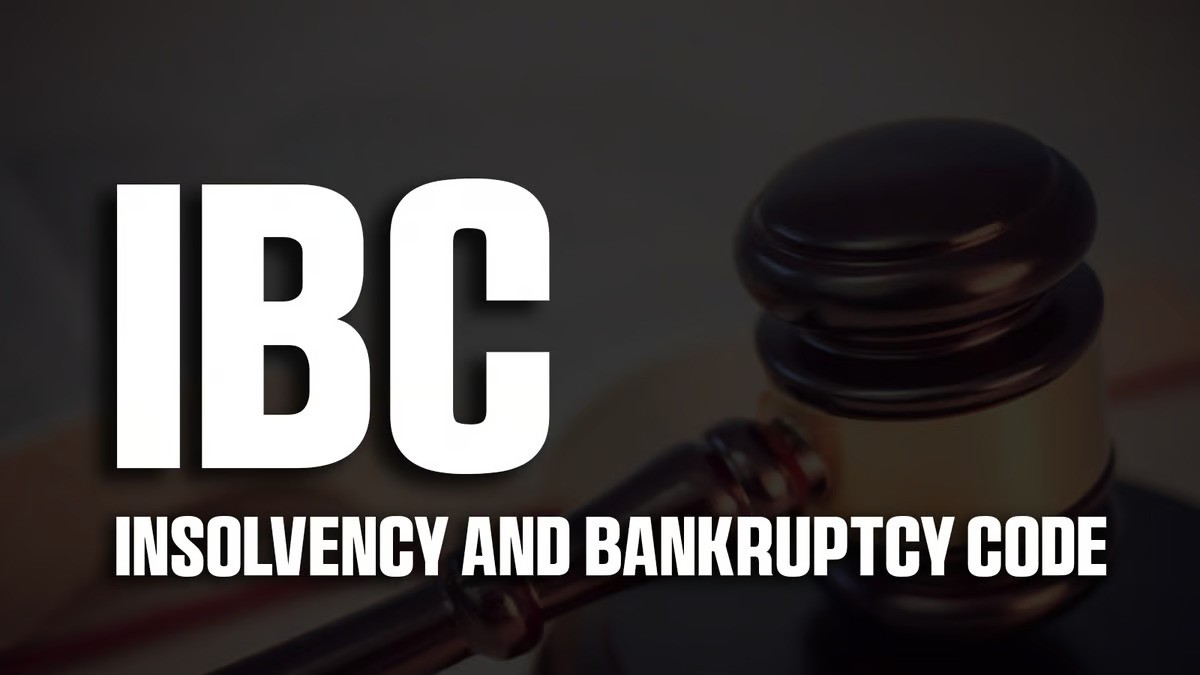
Financial Rehabilitation: Navigating India’s Bankruptcy and Insolvency Regime
In the ever-changing world of business and finance, not every venture succeeds as planned. Economic downturns, market instability, or poor financial management can lead even thriving enterprises toward distress. Recognizing the importance of giving businesses and individuals a second chance, India introduced a structured legal framework — the Insolvency and Bankruptcy Code (IBC), 2016 — to streamline financial recovery and ensure timely resolution of insolvency cases.
Understanding the Insolvency and Bankruptcy Code (IBC)
The Insolvency and Bankruptcy Code, 2016, revolutionized India’s approach to dealing with financial distress. Before the IBC, insolvency and recovery cases were scattered across various laws, leading to confusion, delay, and inefficiency. The IBC consolidated these processes into one comprehensive law, ensuring speed, transparency, and accountability.
The Code applies to companies, partnership firms, and individuals, creating a unified legal structure for handling cases of insolvency and bankruptcy across all business entities.
Key Objectives of the IBC
Time-Bound Resolution:
The Code sets strict deadlines for resolving insolvency cases — 180 days (extendable by 90 days) — ensuring faster outcomes.
Maximization of Asset Value:
The aim is to recover maximum value from distressed assets and prevent them from losing worth due to delays.
Promoting Entrepreneurship:
By giving honest debtors a second chance, the Code encourages entrepreneurship and innovation.
Balancing Interests:
IBC ensures fair treatment of all stakeholders — creditors, debtors, and employees — through a transparent process.
Ease of Doing Business:
With faster recovery mechanisms, India’s business environment becomes more stable and investor-friendly.
The Resolution Process
When a company defaults on payments, a Corporate Insolvency Resolution Process (CIRP) can be initiated by creditors or the debtor itself.
A Resolution Professional (RP) takes charge of the company’s management and prepares a Resolution Plan, which is then approved by the Committee of Creditors (CoC). If no viable plan is approved within the time frame, the company proceeds to liquidation.
This process ensures that either the company is revived through restructuring or its assets are liquidated in an orderly manner — thereby minimizing financial chaos.
Recovery and Beyond
The IBC is not just about liquidation; it’s about rehabilitation. By providing an organized framework, it helps distressed companies restructure their debts, attract new investors, and continue operations.
For creditors, it ensures recovery in a time-bound manner, restoring confidence in the financial system.
Challenges in Implementation
Despite its success, challenges such as case backlogs, valuation issues, and judicial delays persist. Continuous reforms, strengthening of tribunals, and capacity building of insolvency professionals are essential to maintain the Code’s effectiveness.
Conclusion
The Insolvency and Bankruptcy Code symbolizes India’s shift from punishment to rehabilitation, from failure to reform. It promotes accountability while supporting recovery — enabling businesses to bounce back and rebuild.
By navigating the IBC effectively, India is paving the way toward a more resilient, responsible, and revitalized financial ecosystem.
All Categories
Recent Posts
Consumer Protection Law: Safeguarding Consumer Rights
Tags





